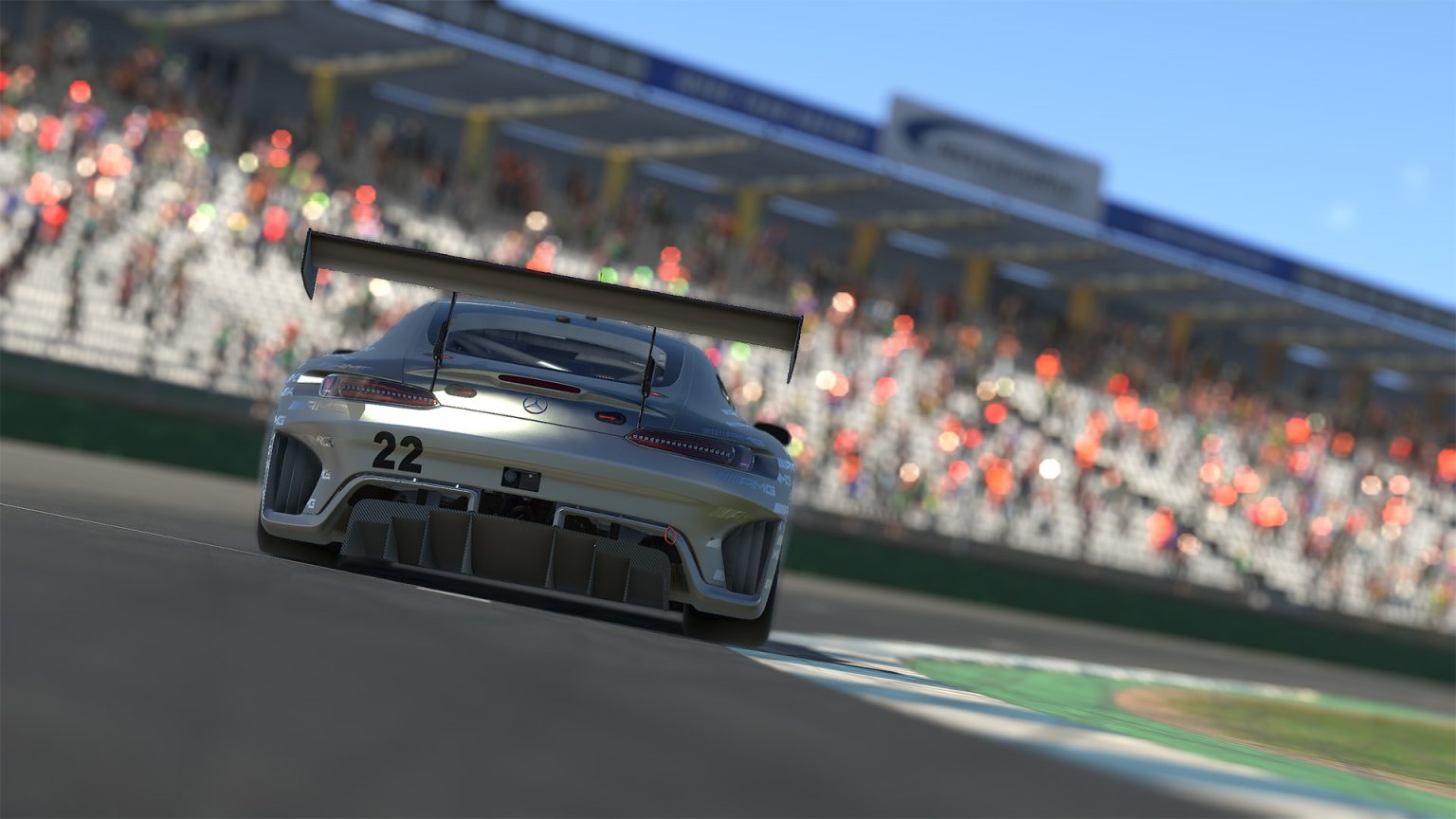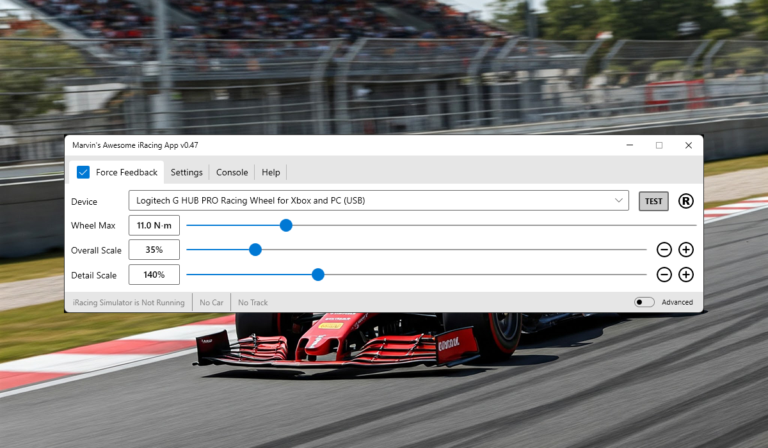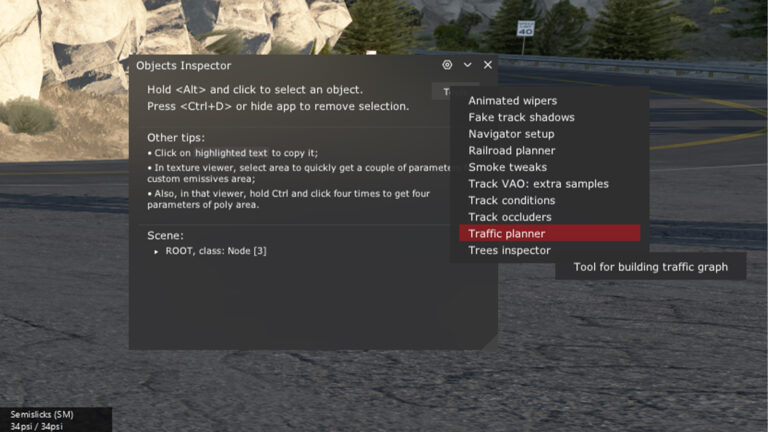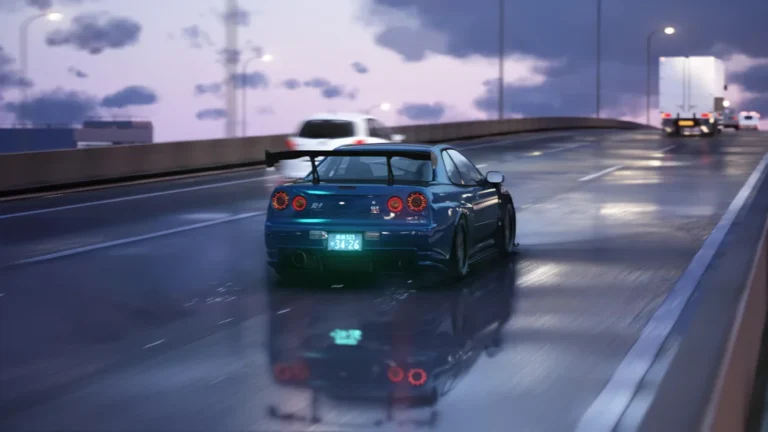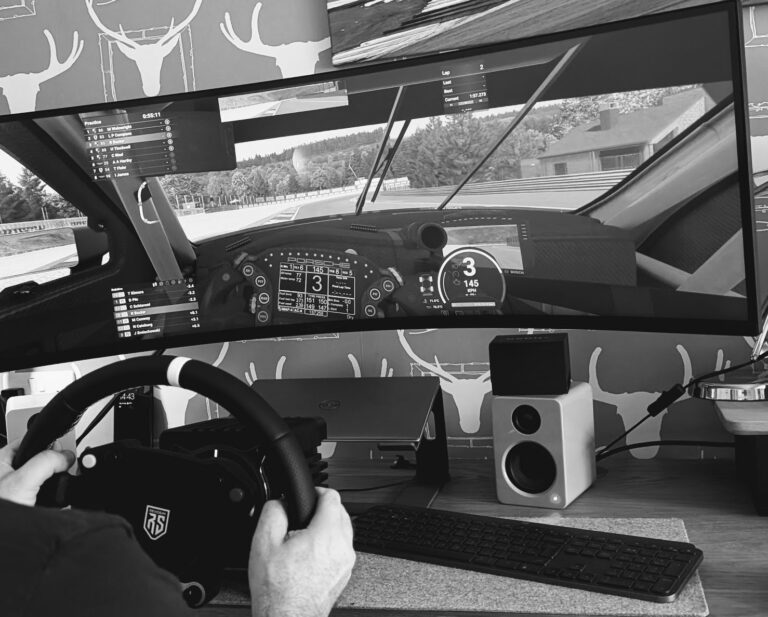iRacing can be quite overwhelming when you first start out. I’ve been through the rookie grind myself, and I know exactly how confusing the licensing system and career progression can feel. That’s why I want to help you figure out which path to take in your iRacing career.
We’ll go over what to do in rookie class, how to quickly upgrade your licence, and how to plan out your iRacing career path – whether you’re dreaming of GT3s, Formula cars, or NASCAR.
Starting Out: Making the Most of Rookie Class
When most of us start out in iRacing, we dream of driving some brilliant cars way down the line. Maybe you’re anxious to jump into the hypercars, Formula One, or NASCAR Cup cars – but that’s not where you start out. We all begin in the rookie class where our choices are limited.
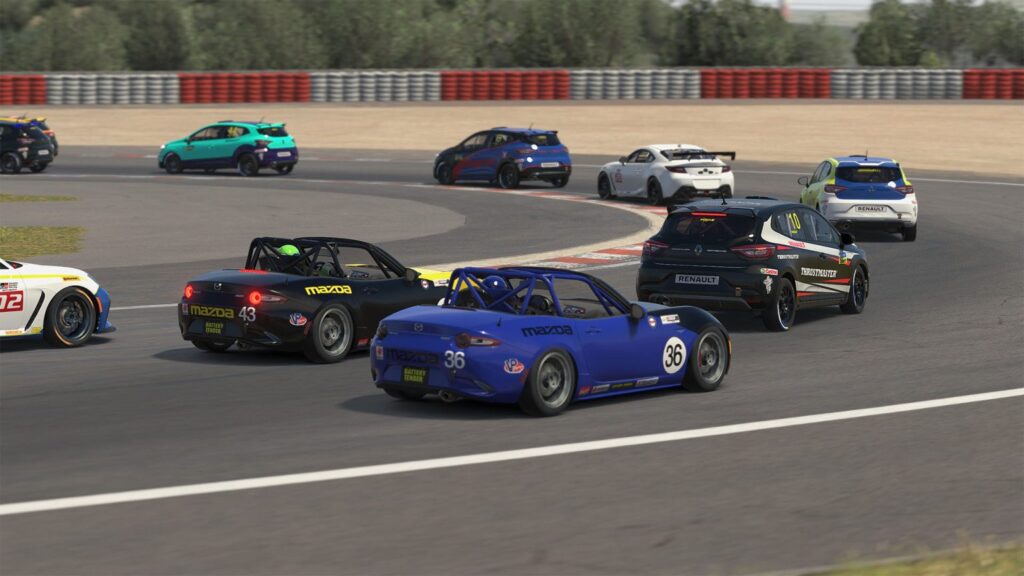
Now, this isn’t necessarily a bad thing. The rookie class can be a mess racing-wise, but it’s a low-stakes environment where you can try out all types of racing iRacing has to offer. Not to mention coming to terms with the basic settings in the UI, learning how a race goes and the importance of testing!
Maybe you’re dead set on road racing when you progress your iRacing career, but I can highly recommend you try out oval racing, rallycross, and dirt ovals as well. They can be a ton of fun, and you’ll want to expand your horizons by driving some other types of racing you wouldn’t have thought of before.
Why Experiment in Rookies?
Here’s the thing – every extra car and track that you’ll need later on will cost you money. It’s better to know what kind of racing you actually want to spend your time on before you spend all your cash.
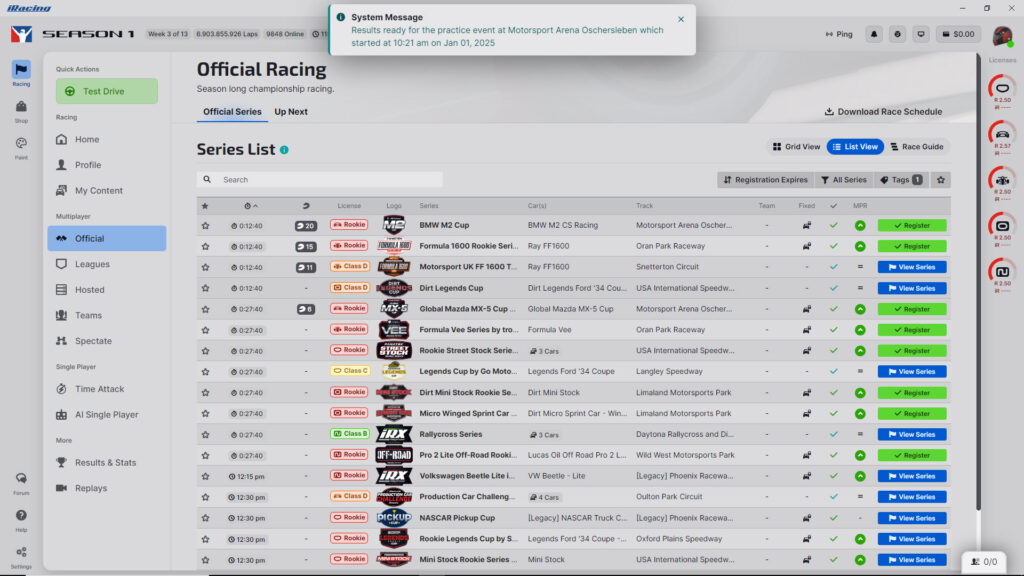
That’s why it’s a good idea to try out different racing disciplines before you commit to one. You might discover that you actually love some kind of racing that you didn’t think about before. I’ve seen plenty of road racers fall in love with dirt ovals, and vice versa.
Planning Your Career Path
Once you’re pretty sure what you like – whether it be road racing or ovals – take a look at the series list and figure out what you want to be aiming for. Whatever racing you might be dreaming of, it’s good to have a goal to work towards because you’ll have to earn the right licence to do that kind of racing.

Example Path to GT3 Racing
If we take GT3 as an example, you’ll need to upgrade your licence from rookie to a B-class. We’re going to have to figure out what we want to be racing while we’re getting to B-class.
Your career path might look as follows:
- Rookie Class: Drive the MX-5s to get out of rookie
- D-Class: Stick with the Toyota GR86 or continue with the MX-5 in the Production Car Challenge
- C-Class: Hop back into the Advanced Mazda MX-5 Cup
- B-Class: Finally drive those GT3 cars!
Sticking to the series which feature cars that are included in the base membership can save you a lot of money. I’ve saved hundreds by being strategic about which series I race in whilst progressing through the licences.
How to Get Out of Rookie Class Quickly
Before we advance our iRacing career, we first need to get out of rookie class. As I stated earlier, use your time in rookies to explore what you like and don’t try to rush out of there. If you’re a safe driver, you’ll be out of there in no time anyway.
But maybe you already know exactly what you want and you want to get there as fast as possible. Here’s what you need to do.
Understanding Safety Rating
Upgrading your licence has nothing to do with how skilled you are as a driver – it all depends on how safe you are as a driver. Getting as much safety rating as possible will be our goal in getting out of rookies and beyond.
To upgrade your licence from Rookie to D-class, all you have to do is get your safety rating up to 3.0. Safety rating comes from racing without any incidents.

The Technical Bits: iRacing’s safety rating (SR) is a rolling average of your incident points per corner over recent races. Here’s how incident points work:
- 0x: Clean racing (what we’re aiming for!)
- 1x: Off-track or loss of control
- 2x: Wheel-to-wheel contact
- 4x: Major incident or wall contact
Important: Beware that all incidents you are involved in are counted as your fault in a racing session. That means you’ll lose safety rating for:
- Running off the track
- Smashing into objects
- Colliding with other drivers
- Losing control of your car
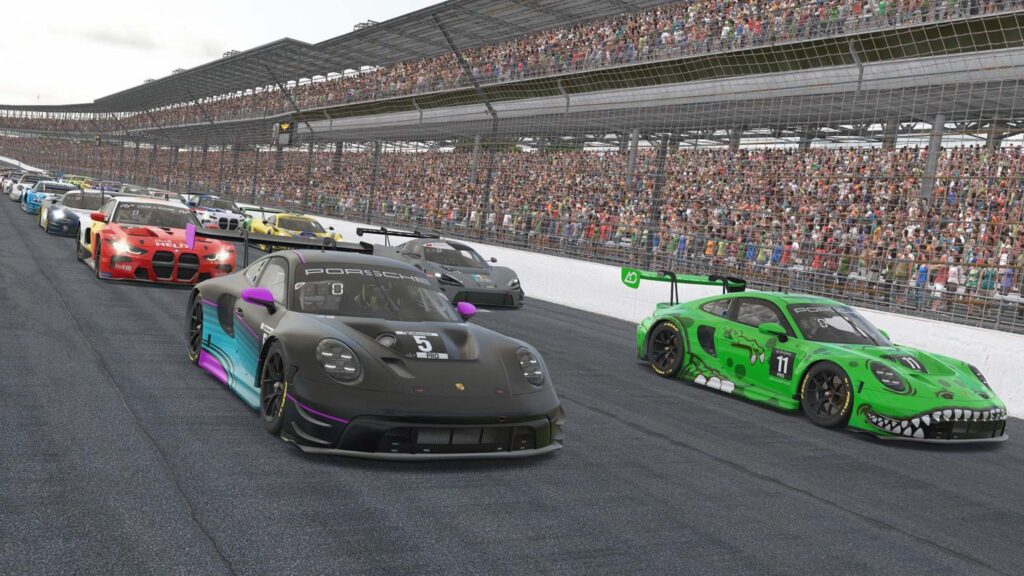
You’ll also need to complete at least 4 official races or time trials (the Minimum Participation Requirement) to be eligible for promotion. Time trials are brilliant for building SR safely if wheel-to-wheel racing feels too risky initially.
Practice vs Race Sessions
When you’re in a practice session test driving your car, you can crash your car into every wall – incidents will not be counted during practice. But once you load into a race, they are counted. So during qualifying and the race itself, you’ll want to avoid anything that can lower your safety rating.
How To: Fast Licence Progression
So how do we go about this? I do recommend qualifying, but pushing it to the limit might endanger your safety rating. To keep things safe, I recommend that you qualify without pushing it too much to make sure that you’re not making any mistakes.
The Pit Start Strategy
When the race starts, I want to start from the pits – which you can do by not clicking the grid button before the race starts. This will help you avoid any carnage at the start of the race. Turn 1 incidents are the quickest way to tank your safety rating.
The rest of the race, you’ll still have to keep things safe yourself. If you keep this up and you don’t have many incidents in your first three or four races, you’ll probably be hitting that 3.0 safety rating in no time, which will instantly upgrade you to a D-class licence.
Beyond D-Class
When you’re in D-class, you’ll need to gain 4.0 safety rating for an instant licence upgrade, or at least 3.0 safety rating at the end of the season to progress further along your chosen career path.
If you’re dead set on a specific racing series, be sure to prioritise safety over winning. But otherwise, race hard and close because it is a ton of fun!
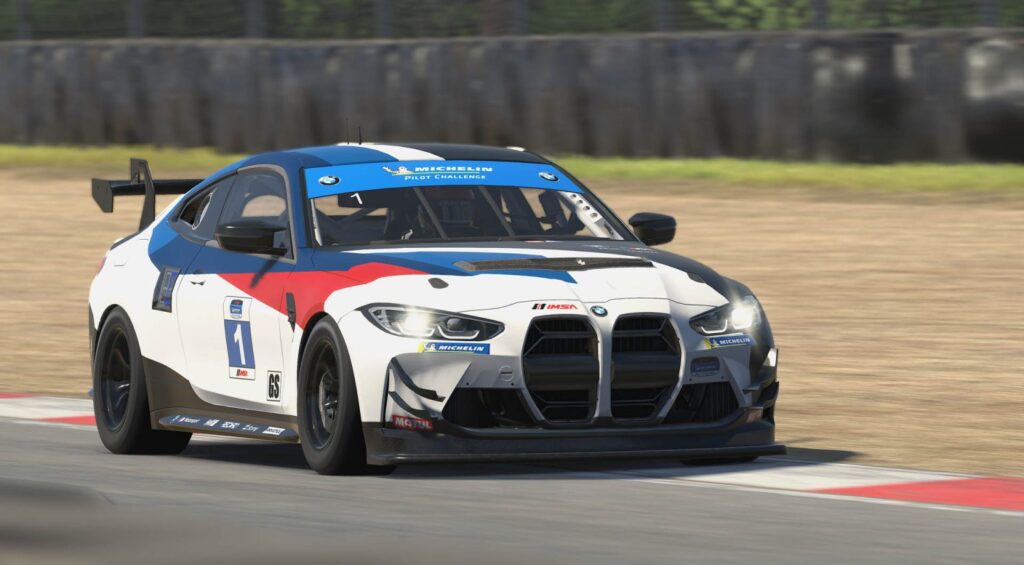
For A and Pro licences, iRacing now requires meeting specific iRating thresholds alongside the SR requirement. If you meet the SR but not the iRating, you’ll receive a “Provisional Licence” – you can still participate but won’t get the full licence until your iRating catches up. This ensures both safety and competitive skill at the top tiers.
Getting Better at iRacing
If you want to get better at iRacing with user-friendly custom insights, try out Trophi.ai where an AI coach can analyse your iRacing data and give you real time feedback to improve as quickly as possible.

What’s New in iRacing for 2025?
The platform has seen some brilliant updates recently. The biggest game-changer is the introduction of rain and dynamic weather (Weather System 2.0) in March 2024 – adding a whole new skill dimension to master. The New Damage Model continues to expand to more cars, making racing more realistic and strategic.
For those of you dreaming of GT3s, there’s good news – iRacing has added a wealth of new GT3 cars, including the Ford Mustang, Aston Martin, Ferrari 296, and the new BMW M4. Plus, new tracks like Misano, Snetterton, Mugello, and Jerez expand your racing opportunities across all licence levels.
Pro tip: The latest season has brought some changes to the rookie series lineup, but the fundamental progression path remains the same. The MX-5 Cup continues to be the best starting point for road racing progression.
Final Thoughts
Remember, iRacing is a marathon, not a sprint. Take your time in rookies, learn proper racecraft, and the licences will come naturally. I’ve been racing on the service for years now, and the drivers who progress steadily always end up being faster and safer than those who rush through.
Whether you end up in GT3s, open-wheelers, or discover a love for oval racing you never knew you had – the journey is half the fun. See you on track.

